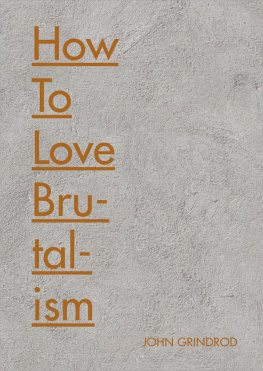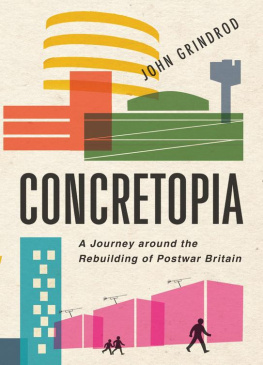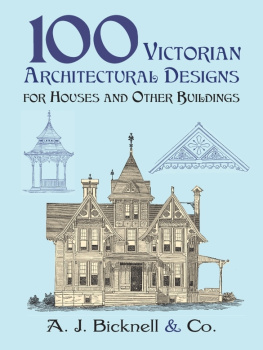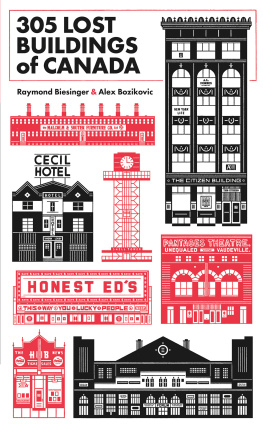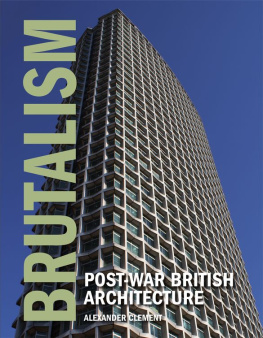Contents
Guide



Contents

B rutalism died on 3 March 1982. The Barbican Centre, part of an epic scheme of London Blitz rebuilding in the making since 1959, was opened by Queen Elizabeth, who said What has been created here must be one of the wonders of the modern world. New commissions for brutalist buildings had been dwindling since the early 1970s, and a few more completions would straggle on until the mid-1980s in Montenegro, Lithuania and Crimea. After that, nothing. The whole architectural movement over, just 35 years since it had begun.
But that wouldnt be the end of the story. In fact, for many of us, encountering, inhabiting and admiring these strange and sometimes shocking buildings, it was just beginning. Because one of the most fascinating aspects of brutalism that uncompromising, dramatic, wilful architectural style of rough concrete and asymmetrical awkwardness is that despite repeated attacks from the media, developers, even the Queens son Charles, loving brutalism has emerged as one of the most unexpected fetishes of the 21st century.
Its strange, the places you are drawn to. My list of favourites includes a mess of modern relics: glass towers and streets in the sky; moderne villas and concrete cathedrals. I am charmed by the lost townscape of Londons Festival of Britain and its rugged South Bank successors. For Cold War cool, it is hard to beat Berlins Fernsehturm television tower or the heroic United Nations Building in New York. The improbability of the nine connected spheres of the Atomium in Brussels and the stacked dishes of the Sydney Opera House leaves me giddy. Such buildings are the products of many different schools of modernism, encompassing heroic and humanist; Scandinavian and East Coast; hi-tech and primitive. Im beguiled by the lot. Yet one style has grown to dominate all others. For most of us, brutalism is modernism.
Marina City, Chicago, USA.
Architect: Bertrand Goldberg.

If brutalism has a problem, it is that for years we have been told that it cannot no, must not be appreciated. This view sees the buildings as ugly brutes that squat on our town centres and destroy the historic fabric of our cities. They are seen as soulless, sordid and beneath consideration, and best ignored. Those of us who have refused to turn our backs on it have had to learn a whole new way of appreciating it. I think it is no coincidence that brutalisms resurgence has coincided with the emergence of both the smartphone camera (the shy brutalists enabler) and social media (providing motivation to take more photos). Together, they have broken a taboo around appreciating and photographing raw concrete buildings secretly at first, and now ever more openly. Back in the day, youd have had to lug round a bulky 35mm camera with an assortment of lenses, announcing your intention to record a building to all and sundry. Then suddenly pictures could be taken furtively, quickly and without anyone noticing. Rather than unavoidably parading your interest, you could instead draw it to the attention of likeminded brutalistas across the globe, aided by the magic of social media subject hashtags and geolocation. Of course, were now beyond that furtive era, and by the end of this book I expect you to be waggling your selfie stick around by your local bit of rough concrete and posting the resulting moody snaps on Instagram, Twitter and Tumblr. Oh, I see that you already are.
The evolution of brutalism is in some ways like that of the dinosaurs. Lets break it into three chunks, the brutalist versions of the Triassic, Jurassic and Cretaceous periods. In the brutalist Triassic (pre-1950s), early forms emerged alongside other modernist styles, just as dinosaurs and reptiles grew and evolved together. Then in the brutalist Jurassic of the 1960s everything became almost incomprehensibly massive. Looking at the size of brutalist buildings of this period, we cant quite believe how they came about. Then, by the 1970s, some most extraordinary manifestations occurred. This is the late flowering of Cretaceous brutalism. Just as the dinosaurs evolved to coexist with more nimble mammals, so brutalist buildings mingled with new hi-tech and postmodern creatures. An asteroid obliterated the dinosaurs, and the evolution of brutalism came to an abrupt end with its own cataclysmic event: the global financial crisis of the 1970s that hit and wiped out future brutalist schemes. Today, the landscape is forever altered. The dinosaurs may have gone but the bones of the buildings remain to tell their story.
To some, the continuing existence of brutalist buildings is as challenging as the existence of dinosaur fossils to a creationist. Built from grit and sand and stone, rocks that have been crushed to minute fragments and have outlasted millennia, these buildings might seem beyond our opinions. Brutalist hulks, with their concrete walls, dark windows and rain-stained balconies, stare down uncomprehendingly at our attempts to project love and hate on them.
But without love, buildings decay and fall down. People cared to construct them, and they must care love to maintain them too if the structures are to remain part of our landscape. Vandalism and graffiti can ruin them. Buildings suffer under the onslaught of snowdrifts and leaves, wind and rain, and can be fatally damaged or even fall down. Human intervention is necessary to keep them standing and to maintain their faades and defences, so that they might continue to thrive.
With brutalism there are no easy fixes. Despite the awkward asymmetry and sheer sculptural weirdness, these structures only remain standing through continued love and admiration. They might look like the toughest buildings on the block, but these are delicate blooms. With most being bespoke rather than off-the-peg creations, maintenance is an issue. No two buildings have stairs, windows, walls or roofs configured in quite the same way. People often think of brutalism as an inexpensive sort of architecture but, as Dolly Parton once said, It costs a lot of money to look this cheap.
In this book I aim to share my fascination for this extraordinary branch of architecture. I will take you through the different elements that make brutalism so special: its history and ideals, design and construction; the culture that surrounds it and its global impact; its brief flowering, sudden death and strange afterlife. We will travel back to its origins, meet the big names that brought it to life, rediscover some lost gems and explore brutalisms place in art, culture and history. Each of the stories and buildings along the way will tell us something about what makes this form of raw concrete building so worthy of attention. There will be tales of great creativity or domestic harmony, and others that are darker, exploring brutalisms flaws and the violence and destruction meted out by its critics.
For all its monolithic power, brutalism has never seemed more fragile or endangered. By learning to appreciate these buildings we can help preserve the riches of this strange and beguiling style. In this book Ive tried to consider social history alongside art, architecture and design, to give some context to the work of the people who created brutalism. Im aided in this by the enviable skills of The Brutal Artist whose beautifully detailed online illustration project has inspired many peoples love of architecture. Still, I cant help thinking that if you need a book called

